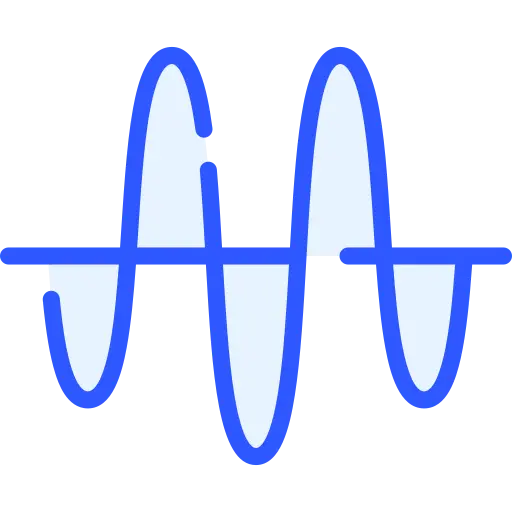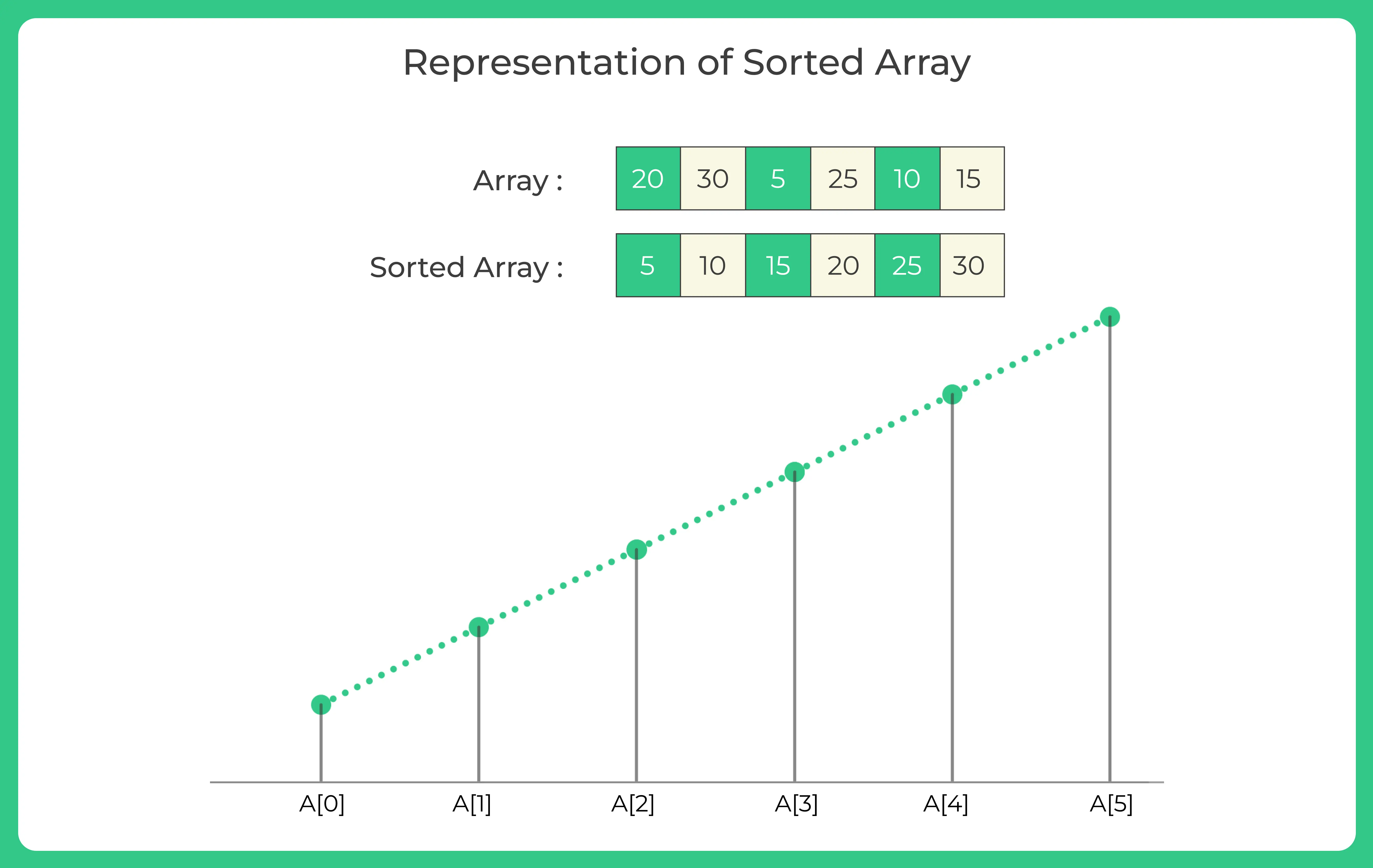0
Notifications Mark All Read
- Login
- Get Prime
Sort Array in Waveform in Java
Sort Array in Waveform
This page is all about Sort Array in Waveform in Java Language . To convert an array in waveform we can use two concepts. First method is Brute Force Solution — Using Sorting Second method is Incrementing the loop by two. We will be learning about both of them in this page, their working and their Java program.
Sort Array in Waveform in Java Language
Sorting an array in waveform refers to the process of rearranging the elements of the array in a specific manner, such that the resulting array represents a waveform-like pattern. In waveform sorting, the elements of the array are arranged in a way that alternates between ascending and descending order, mimicking the shape of a waveform with peaks and troughs.
For example, consider the following waveform sorted array:
[10, 5, 6, 2, 20, 3, 48, 30]
In this array, the first element 10 is the peak, the second element 5 is the valley, the third element 6 is the peak again, the fourth element 2 is the valley, the fifth element 20 is the peak and so on.

Method 1 : Brute Force Solution (using sorting)
The brute force solution using sorting involves the following steps:
Step 1: Sort the array in ascending order. For example, if the input array is {20, 30, 5, 25, 10, 15}, after sorting, we get {5, 10, 15, 20, 25, 30}.
Step 2: Swap all adjacent elements of the array. Using the sorted array from step 1, we swap adjacent elements to obtain the final result. For example, swapping adjacent elements in the sorted array {5, 10, 15, 20, 25, 30} would give us {10, 5, 20, 15, 30, 25}.
This method is simple but may not be the most efficient solution for larger arrays, as sorting has a time complexity of O(n log n) and swapping adjacent elements has a time complexity of O(n), resulting in an overall time complexity of O(n log n) + O(n), which can be further optimized.


Method : 1 -Solution in Java Programming Language
public class Main
{
public static void makeWaveform(int n, int arr[])
{
int temp;
for(int i = 0; i < n-1; i++)
{
for(int j = i+1; j < n; j++)
{
if(arr[i] > arr[j])
{
temp = arr[i];
arr[i] = arr[j];
arr[j] = temp;
}
}
}
for(int i = 0; i < n; i += 2)
{
if(i < n-1)
{
temp = arr[i];
arr[i] = arr[i+1];
arr[i+1] = temp;
}
}
System.out.print("Array in Waveform Pattern : ");
for(int ele : arr)
{
System.out.print(ele + " ");
}
}
public static void main(String args[])
{
int arr[] = { 5, 8, 1, 4, 6, 3, 2, 7 };
int n = arr.length;
makeWaveform(n, arr);
}
}
OUTPUT: Array in Waveform Pattern : 2 1 4 3 6 5 8 7
Method 2 : Incrementing the loop by 2
The above method using sorting has a time complexity of O(n log n), which may not be the most optimal solution for this problem. The Incrementing the loop by 2 method can indeed solve the problem in O(n) time complexity by making use of a single traversal of the array. Here are the steps for solving the problem in O(n) complexity:
Step 1: Traverse all even position elements of the array (i.e. elements at index 0, 2, 4, 6, etc.).
Step 2: For each even position element, check the following two conditions:
Condition 1: If the current element is smaller than the previous odd element (i.e. element at index (i-1)), swap the previous and current element.
Condition 2: If the current element is smaller than the next odd element (i.e. element at index (i+1)), swap the next and current element.
By following these steps, you can rearrange the array in O(n) time complexity, as you are traversing the array once and performing constant time swaps. This method is more efficient compared to the sorting method in terms of time complexity for this specific problem.
Method: 2 – Solution in Java Programming Language
public class Main
{
public static void makeWaveform(int n, int arr[])
{
int temp;
for(int i = 0; i < n; i += 2)
{
if(i > 0 && arr[i-1] > arr[i])
{
temp = arr[i];
arr[i] = arr[i-1];
arr[i-1] = temp;
}
if(i < n-1 && arr[i] < arr[i+1])
{
temp = arr[i];
arr[i] = arr[i+1];
arr[i+1] = temp;
}
}
System.out.print("Array in Waveform Pattern : ");
for(int ele : arr)
{
System.out.print(ele + " ");
}
}
public static void main(String args[])
{
int arr[] = { 5, 8, 1, 4, 6, 3, 2, 7 };
int n = arr.length;
makeWaveform(n, arr);
}
}
OUTPUT: Array in Waveform Pattern : 8 1 5 4 6 2 7 3
Get over 200+ course One Subscription
Courses like AI/ML, Cloud Computing, Ethical Hacking, C, C++, Java, Python, DSA (All Languages), Competitive Coding (All Languages), TCS, Infosys, Wipro, Amazon, DBMS, SQL and others
Arrays
- Introduction to Arrays – C | C++ | Java
- Introduction to 2-D Arrays – C | C++ | Java
- Sorting of Array – C | C++ | Java
- Array Rotation – C | C++ | Java
- Reverse an array or string- C | C++ | Java
- Find pairs in array with given sum – C | C++ | Java
- Sort the array in Waveform – C | C++ | Java
- Majority Element in Array – C | C++ | Java
- Boyer-Moore’s Voting Algorithm – C | C++ | Java
- K-pairs with smallest sum in 2 arrays – C | C++ | Java
- Largest Sum Contigous SubArray – C | C++ | Java
- Maximum Average Sub-array of K length – C | C++ | Java
- Size of sub-array with max sum – C | C++ | Java
- Sub-array with given sum – C | C++ | Java
- Triplet that sum to a given value – C | C++ | Java
- Segregate 0’s and 1’s in array – C | C++ | Java
- Segregate 0’s 1’s and 2’s in array – C | C++ | Java
- Sort elements in array by frequency – C | C++ | Java
- Finding pythagorean triplets in an array – C | C++ | Java
- Reorder array using given indexes – C | C++ | Java
- Merging two sorted arrays – C | C++ | Java
- Minimum number of Merge Operations to make an Array Palindrome – C | C++ | Java
- Find Zeros to be Flipped so that number of Consecutive 1’s is maximized – C | C++ | Java

 0
0



import java.util.Arrays;
public class ArrayWaveform {
int temporaryVariable = 0;
public void swapingOfTwoAdjacentNumbers(int[] array, int firstElement, int secondElement) {
temporaryVariable = array[firstElement];
array[firstElement] = array[secondElement];
array[secondElement] = temporaryVariable;
}
public void sortingArrayInWaveForm(int[] arr,int length) {
for(int i=0; i arr[i + 1]) && i % 2 == 1) {
swapingOfTwoAdjacentNumbers(arr, i, i + 1);
}
if ((arr[i] < arr[i + 1] && i % 2 == 0)) {
swapingOfTwoAdjacentNumbers(arr, i, i + 1);
}
}
System.out.println("array in waveform is:");
System.out.println(Arrays.toString(arr));
}
}
import java.util.Arrays;
import java.util.Scanner;
public class Main {
public static void main(String[] args) {
Scanner sc = new Scanner(System.in);
System.out.println("enter the length of the array:");
int lengthOfTheArray = sc.nextInt();
int[] array = new int[lengthOfTheArray];
System.out.println("enter the array of integer types:");
for(int i=0; i<lengthOfTheArray; i++) {
array[i] = sc.nextInt();
}
System.out.println("the array before sorting it in waveform is:");
System.out.println(Arrays.toString(array));
ArrayWaveform wave = new ArrayWaveform();
wave.sortingArrayInWaveForm(array,lengthOfTheArray);
}
}